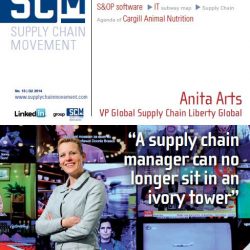How to harvest success with S&OP in agribusiness

S&OP is often pictured as a largely standard process; textbook S&OP starts with agreeing an unconstrained demand plan that is handed over to supply planning who need to ensure product availability. In case of important bottlenecks, the S&OP meeting is the final escalation step in the process, where all remaining imbalances should be resolved.
For many companies in the agribusiness this is only half the story, as they often have to deal with a supply side with very specific characteristics. Product or ingredient supply in agri often has limited responsiveness and in some cases high levels of uncertainty.
Let’s for example take a look at harvest products, where supply volumes often have to be contracted long in advance. Volume or mix adjustments cannot be made afterwards, or only against significant costs. The actually harvested volumes and quality can deviate significantly from the contracted volumes though, impacting the company’s ability to fulfil its originally anticipated demand plan.
Dairy products are another example where supply volumes often have to be fixed over longer periods of time. The contracted volumes may be driven by long term demand projections, but market circumstances will change whereas supply volumes remain fixed. The challenge that arises is how to still balance demand and supply.
From demand to supply driven
The diversity in agribusiness is so high that there can be no standard S&OP process here either, even when making it specific to this segment. There is a common framework though, that will have to be detailed by the specific supply characteristics.
For the mid to long term, the planning process in most cases is driven by the “demand side”; strategic plans, projected market developments and shares, innovations, competitor activities, etc. In this phase, supply planning’s objective is to enable the fulfilment of these demand plans. Many agribusiness companies reach a point in their planning horizons though where supply takes over. Demand planning still has a role, but supply volumes and qualities are more or less fixed now and therefore put serious constraints on what can an cannot be produced and sold.
Impact on S&OP: how to maximise value?
The limited short term supply responsiveness must have an impact on how S&OP is set-up. Somewhere in the process from long to mid to short term planning, the decision focus in S&OP has to change, from demand to supply driven. From: “how do we ensure sufficient supply to fulfil all demand?” to: “how can we get maximum value from the given supply volumes and mix?”.
The levers that companies have to maximise value from the (more or less) fixed supply volumes are very different, and this will have to drive the way the S&OP process is designed. What are important phases in the planning horizon, what can and cannot be changed, what information do we need and which persons are required to take key decisions? Understanding these design parameters is essential when setting-up the S&OP process. A standard Demand-Supply-S&OP cycle therefore will not do in all but the simplest cases.
Conclusion
S&OP is a means to an end, not a textbook process that can be implemented as a commodity. It is a decision making process, and its design therefore should match the key decisions that it has to support.
The agribusiness has a number of specific characteristics, mainly on the supply side. A linear and demand driven process therefore will not meet all requirements here. Failing to recognise that companies operating in the agribusiness have to cope with very specific and inflexible supply volumes will lead to flawed S&OP processes. Pity, since a well-designed S&OP process can add huge value, specifically in agri!
Hans van der Drift, Involvation









